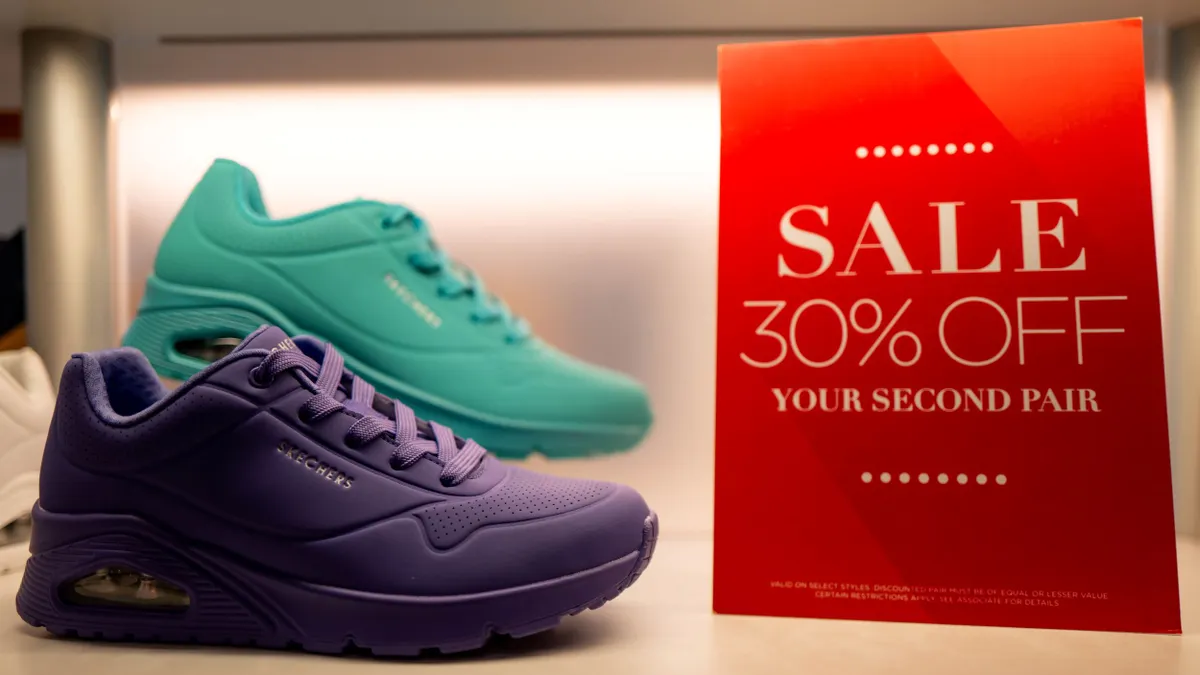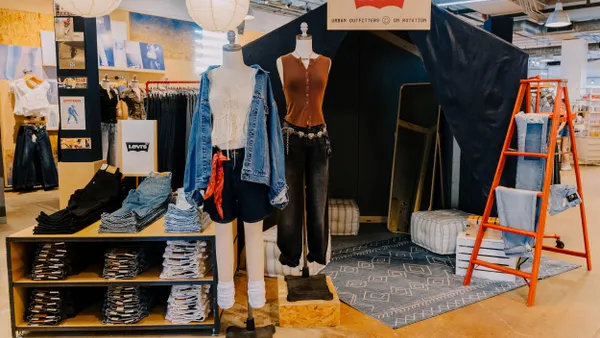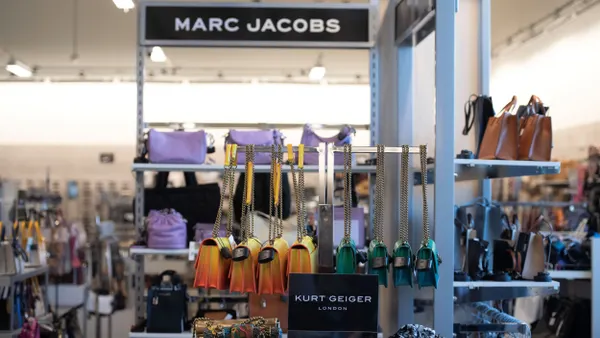Dive Brief:
- Burberry reported first quarter fiscal 2026 retail revenue of 433 million pounds, or about $584 million, down 6% year over year, according to a Friday earnings release.
- Comparable store sales for the period were up 1% year over year for the region comprising Europe, the Middle East, India and Africa. The key metric rose 4% in the Americas. In China, comp sales sank 5%, while in the rest of the Asia Pacific region, they fell 4%.
- The company also said that its previously announced organizational changes, which included up to 1,700 job cuts, were on target to foster “greater collaboration and agility,” while its cost efficiency program was on track to deliver 80 million pounds in annualized savings by FY26.
Dive Insight:
Despite some losses, Burberry’s Q1 results show marked improvement over the first quarter of fiscal 2025, when retail revenue sank 22% year over year and Joshua Schulman took over as CEO.
Under Schulman, the company has been working toward a turnaround, and in November announced its strategic Burberry Forward plan. That initiative was designed to refocus the brand on its history and heritage, with particular attention on outerwear and scarves. At the time of the plan’s announcement, Burberry said that the brand’s falling revenue was a result of a move away from its core categories.
“Over the past year, we have moved from stabilising the business to driving Burberry Forward with confidence,” Schulman said in the release. “The improvement in our first quarter comparable sales, strength in our core categories, and uptick in brand desirability gives us conviction in the path ahead.”
Shulman added that while external challenges persist and the company is still in the early stages of its transformation, the initial progress is encouraging.
By region, EMEIA growth was boosted by local spending but offset by a decline in tourist spending. Meanwhile, the Americas benefited from growth in new customers. In the Asia Pacific region, which includes Japan, South Korea, Southeast Asia, Australia and New Zealand, a challenging performance in Japan was partially offset by growth in South Korea.
On a call with analysts, Schulman said that regions around China were suffering from a decline in tourism among Chinese consumers. In addition, he added that within China, Burberry was seeing an increase in sales among Generation Z and younger customers, while some customers in that region who focus more on “investment dressing” tend to shop later in the year.
In its full year outlook, Burberry said it’s focused on reigniting brand desire.
“In the first half we are continuing to prioritise investment and expect to see the impact of our initiatives build as the year progresses,” the company said. “We will deliver margin improvement with a continued focus on simplification, productivity and cash flow. We remain confident that we are positioning the business for a return to sustainable, profitable growth.”











